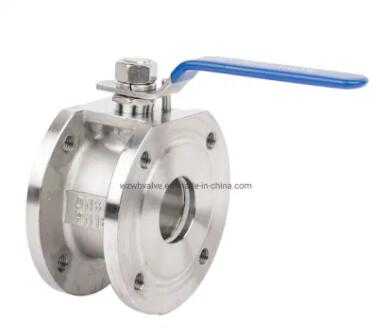Exploring the Mechanics of Ball Valves with Gear Operators
2024-03-05
Introduction:
Ball valves with gear operators are essential components in industrial and commercial piping systems, offering precise control and reliable shut-off capabilities. These valves utilize a spherical disc (the ball) to regulate the flow of fluids within pipelines. In this blog post, we'll delve into the inner workings of ball valves with gear operators, exploring their design, function, and applications in various industries.
Understanding Ball Valves:
Before delving into the specifics of gear-operated ball valves, let's first understand the basic principles of ball valves. A ball valve consists of a spherical disc (the ball) with a hole bored through its center. When the valve is open, the hole aligns with the pipeline, allowing fluid to flow through. Conversely, when the valve is closed, the ball rotates to block the flow path, effectively sealing off the pipeline.
Introduction to Gear Operators:
Gear operators are mechanical devices used to manually actuate and control the operation of ball valves. They consist of a gear mechanism, a handwheel or lever, and a stem connected to the ball valve. By turning the handwheel or lever, operators can rotate the stem, causing the ball inside the valve to pivot and adjust the flow of fluids.
Functioning of Ball Valves with Gear Operators:
The operation of a ball valve with a gear operator is straightforward yet highly effective. When the handwheel or lever of the gear operator is turned, it rotates the stem connected to the ball valve. As the stem rotates, it transfers the rotational motion to the ball inside the valve. Depending on the direction of rotation, the ball either aligns with the pipeline to allow fluid flow (open position) or obstructs the flow path to shut off the flow (closed position).
Key Features and Benefits:
Ball valves with gear operators offer several key features and benefits:
1. Precise Control: The gear mechanism provides precise control over the position of the ball valve, allowing operators to regulate flow rates with accuracy.
2. Reliable Shut-Off: With a quarter-turn operation, ball valves with gear operators offer quick and reliable shut-off capabilities, minimizing downtime and reducing the risk of leaks or spills.
3. Durability: Gear operators are typically constructed from robust materials such as stainless steel or ductile iron, ensuring durability and longevity in demanding industrial environments.
4. Versatility: Ball valves with gear operators are versatile and can be used in a wide range of applications, including oil and gas, water treatment, chemical processing, and more.
5. Manual Operation: Unlike automated valves that require external power sources, gear-operated ball valves can be operated manually, making them suitable for remote or inaccessible locations where power may not be readily available.
Applications:
Ball valves with gear operators are commonly used in various industries and applications, including:
- Oil and Gas: Pipeline isolation, flow control, and shut-off in oil refineries, petrochemical plants, and natural gas processing facilities.
- Water Treatment: Control of water flow in municipal water distribution systems, wastewater treatment plants, and irrigation networks.
- Chemical Processing: Regulation of chemical flows in chemical manufacturing plants, pharmaceutical facilities, and industrial processing applications.
- HVAC Systems: Control of fluid flows in heating, ventilation, and air conditioning (HVAC) systems, including chilled water and hot water systems.
Conclusion:
Ball valves with gear operators are indispensable components in industrial and commercial piping systems, offering precise control, reliable shut-off, and durability in a wide range of applications. By understanding their mechanics and applications, engineers, operators, and maintenance personnel can harness the versatility and efficiency of these valves to optimize fluid flow control and ensure operational reliability in diverse industrial settings.



